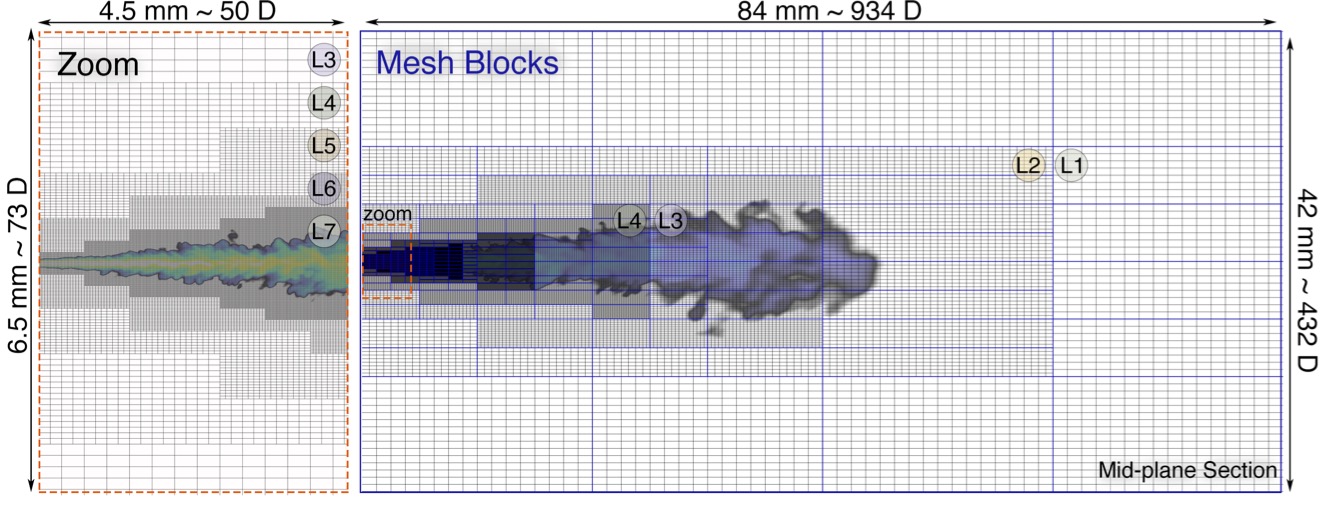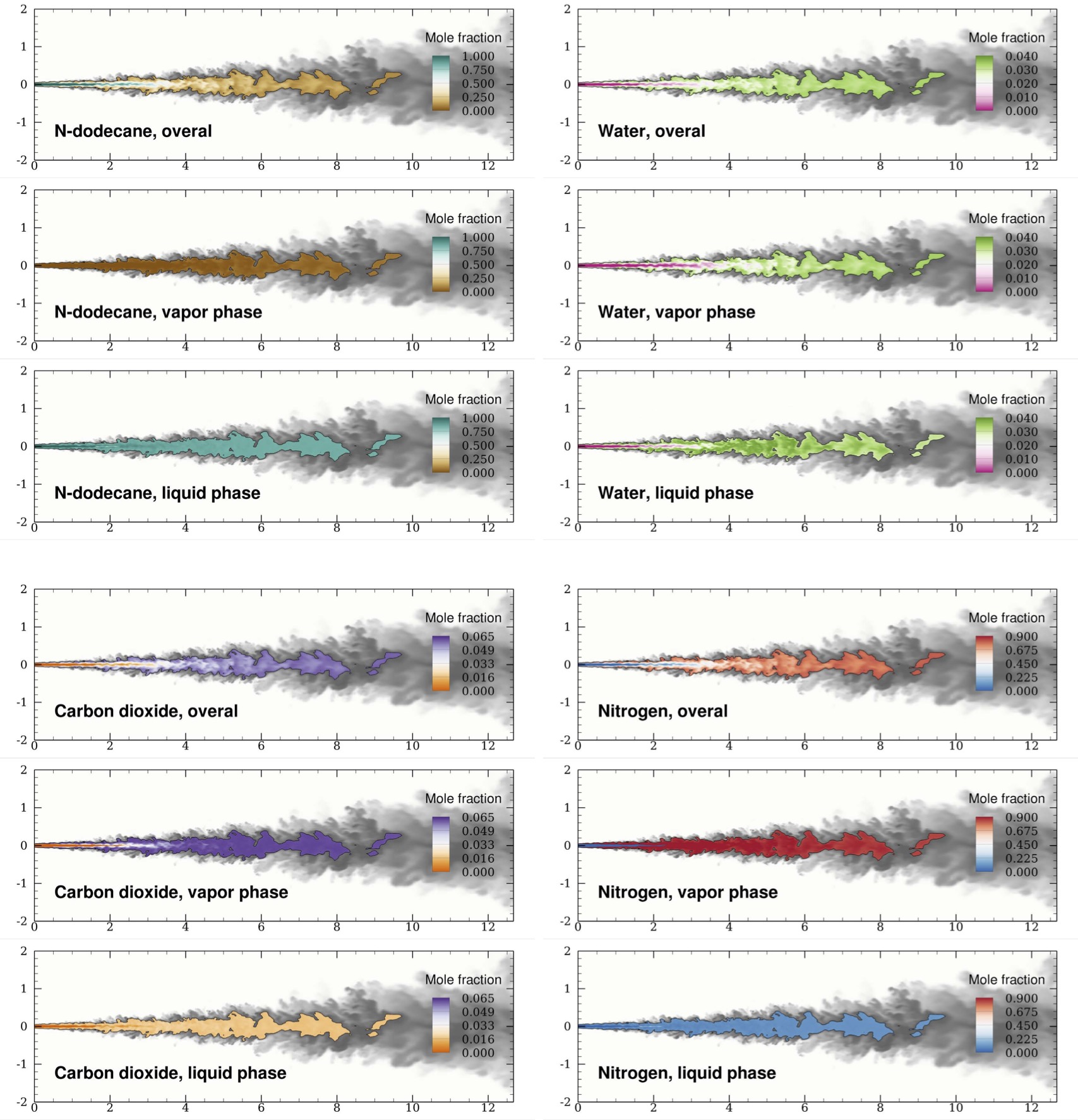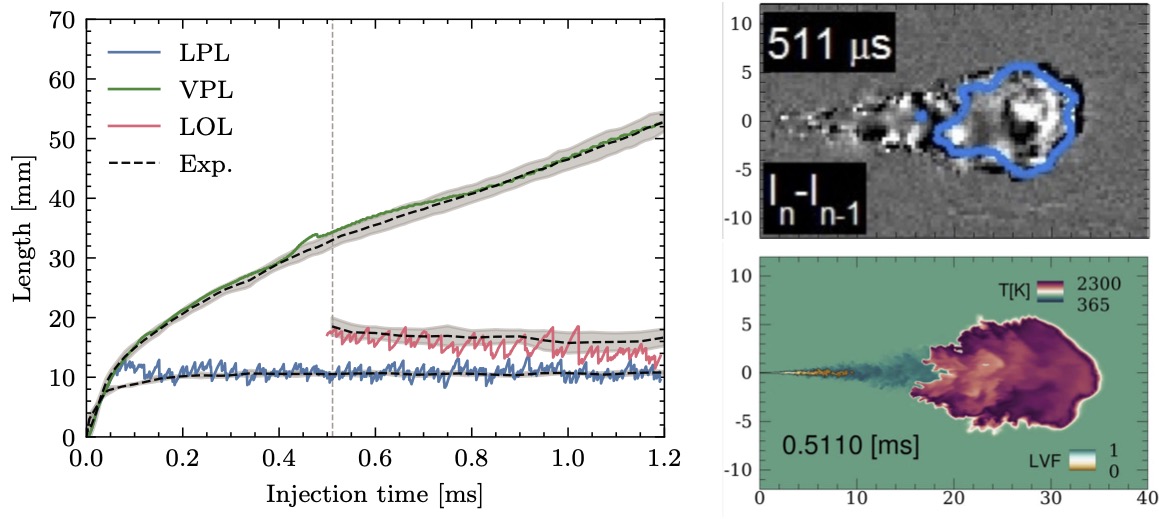M. Fathi, S. Hickel, D. Roekaerts (2022)
Physics of Fluids 34: 085131. doi: 10.1063/5.0099154
We present a novel framework for high-fidelity simulations of inert and reacting sprays with highly accurate and computationally efficient models for complex real-gas effects in high-pressure environments, especially for the hybrid subcritical/supercritical mode of evaporation during the mixing of fuel and oxidizer at transcritical conditions.
The methodology is based on solving the fully conservative form of the compressible multi-species Navier-Stokes equations along with real-fluid volumetric and caloric state equations. These state equations provide accurate real-fluid thermodynamic properties for multi-component fluids that can exist either in a single phase or undergo phase transitions during vaporization and condensation. Multiphase and real-gas effects are also considered in the finite-rate chemistry model, which we propose to be based on the fugacity or the molar specific volume function of the species. The adaptive local deconvolution method is used as a physically consistent turbulence model for large-eddy simulation (LES). The proposed method represents multiphase turbulent fluid flows at transcritical pressures without relying on any semi-empirical break-up and evaporation models. All multiphase thermodynamic model equations are presented for general cubic state equations coupled with a rapid phase-equilibrium calculation method that is formulated in a reduced space (Fathi & Hickel, 2021) based on the molar specific volume function.
The performance of this novel method is demonstrated and validated for the transcritical reacting and non-reacting Engine Combustion Network (ECN) benchmark Spray A at transcritical operating conditions. LES results obtained with the proposed thermodynamics models are in excellent agreement with experimental reference data for both cases. The time evolution of temperature in the mixture fraction space proves the existence of the low-temperature and high-temperature combustion stages in the auto-ignition process of Spray-A that has been reported experimentally.
The very good agreement of auto-ignition time, flame lift-off length, and flame structure might be surprising because only a simple two-step reaction mechanism has been applied. However, one should note that used mechanism has been specifically calibrated for the considered flow conditions including low- and high-temperature ignition stages. In our LES, real-gas vapor-liquid equilibrium calculations accurately determine the saturated vapor composition, and this composition and the rate with which it mixes with the oxidizer determines when and where auto-ignition takes place.

A mid-plane section of the 3D multi-block structured grid with 7 levels of mesh refinements generated for LES-MT of reacting and non-reacting ECN Spray-A.

Volume renderings at 800 μs after the start of transcritical injection of n-dodecane (C12H26 at 363 K) into a preheated chamber at 900 K without oxygen (left) and with oxygen (right) using a real-fluid finite-rate chemistry and multiphase thermodynamics models. The operating pressure is 60 bar which exceeds the critical pressure of n-dodecane.

Instantaneous molar composition of the overall fluid, as well as the composition of the vapor and liquid phases. The background contour represents the temperature field from dark to light shades. In the two-phase region, contours of the species mole fraction of saturated liquid, saturated vapor and overall mixture are presented.

Vapor prenetration length (VPL) and liquid penetration length (LPL) and flame lift-off length (LOL) predicted by the LES-MT method (solid lines) and measured experimentally (dashed lines) for the reacting Spray-A on the left. The two right panels show an experimental schlieren image with highlighted flame boundaries along with an LES-MT temperature contour overprinted with the LVF at the same nominal time.
